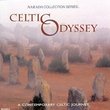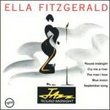| All Artists: Dvorak, Toscanini, NBC Title: Symphony 9 Members Wishing: 0 Total Copies: 0 Label: RCA Release Date: 5/25/1990 Genre: Classical Styles: Forms & Genres, Theatrical, Incidental & Program Music, Symphonies Number of Discs: 1 SwapaCD Credits: 1 UPC: 090266027927 |
Search - Dvorak, Toscanini, NBC :: Symphony 9
 | Dvorak, Toscanini, NBC Symphony 9 Genre: Classical
|
Larger Image |
CD DetailsSimilarly Requested CDs
|
CD ReviewsSlightly Unidiomatic Readings of Czech-Hungarian Works, 09/17/1998 (4 out of 5 stars) "Toscanini's view of the "New World" was in flux during his NBC broadcast career: at his first production in 1938, he opted for the exposition repeat of the opening movement, which he dropped for later broadcasts and his commercial recording (the massive, taut, and somewhat broader '38 aircheck was once available in solid "in-house" monaural transcription sound on a fine 5-LP Music & Arts set released in the seventies.) By the time of his commercial recording sessions for Victor on February 2, 1953, at Carnegie Hall, Maestro had somewhat "streamlined" his approach: no first movement repeat; faster tempi; a bit of emotional detachment; and an utter absence of nineteenth- century sentimentality. One hears a rugged view, but not as severe or unyielding as might be feared. The live broadcast (issued on a highly fraudulent and inaccurate 'bootleg' CD in execrable sound) has, as usual, more spontaneity, though there are bad edit points and tape- joins, tinny audio quality, and a terrible momentary blunder of ensemble at the end of the scherzo.This commercial release is, therefore, much preferable to the (undisclosed) shoddy aircheck from 31 January 1953.The 1947 live broadcast of the suite from Kodaly's "Hary Janos" was first issued, as I recall, on a Victor Red Seal LP as coupled with Respighi's Feste Romane. The sound of that side of the Kodaly was so thin and shrill as to make one's eyes water. Luckily, a better transfer from good archival disks has been affected for this CD version, though it must be noted that Studio 8-H a bit dead and lifeless compared to the richer perspective on the 1940 Toscanini "Petruchka" tableaux. The rendition is bold and extroverted, with as much good humor as one is likely to experience from the rather forbiddingly solemn Maestro. I once heard a rehearsal of this production, and was interested to note that even Toscanini could not get all the nuance he desired from his winds and horn player. The Smetana "Moldau" is a famous 1950 commercial recording, also made in 8-H but done with an immeasurably superior instrumental balancing and blend, and a greater sense of atmosphere. The highs and lows are registered with almost modern accuracy and fullness.Sadly, RCA's producers have decided to "lavish" this recording with a bath of phony digitized stereophonic ambient echo (unlike most of the other "Toscanini Collection" authentic mono CDs.) Suffice it to say that while it falsifies the original recordings, it is in no way as excessive and offensive as the "remasterings" by the incompetent engineers of Grammophono 2000 or Iron Needle records." Toscanini Showpieces Robert E. Nylund | Ft. Wayne, Indiana United States | 03/14/2006 (5 out of 5 stars) "Toscanini's 1953 Carnegie Hall recording of Dvorak's "New World" Symphony has always been a hallmark of the outstanding record sessions he led in his later years. It's amazing to hear such a spirited performance conducted by the Maestro, who turned 86 the year the recording took place. He clearly had a great affinity for this music, which was Dvorak's memorable homage to America, where he lived and taught for several years. Dvorak's final symphony is said to be entirely original, but it clearly represents his own unique impressions of the spirit of America. It was definitely influenced by Native American and African American music. The second movement, played with such feeling by the NBC Symphony, is much in the vein of a Negro spiritual and was even arranged into a song called "Goin' Home." The performance has exceptionally good sound, too. The suite from Zoltan Kodaly's "Hary Janos" is taken from a 1947 NBC broadcast concert in Studio 8-H. It has remarkably good sound and the performance of music that was unusually modern for Toscanini is one of his best. There is great joy throughout the music and the Maestro clearly reflected that. Bedrich Smetana's "The Moldau" is from a six-movement symphonic suite called "Ma Vlast." This musical depiction of a river has incredible imagery and is wonderfully orchestrated. Toscanini's performance, from a 1950 recording session in Studio 8-H, is quite sensitive and powerful, when it needs to be. Very few recordings or performances of this familiar music have been played with such precision and intensity. " Toscanini the maestro! Hiram Gomez Pardo | Valencia, Venezuela | 02/13/2006 (4 out of 5 stars) "When you make the whole account of the most expansive and mercurial performances about the famous New World Symphony, you will have to include necessarily, this version among the top twenty.
The list is great because the Symphony can be approached from several conceptions. This version is so good that you may easily forget the abominable and hyper kinetic Third Movement. Toscanini hated the Adagios and this possibly the best available evidence. Impetuous, frenetic and passionate are some of the major epithets I would have to add to this historical interpretation. If I had to pronounce myself for my top seven, these would be: the incandescent version of 1953 with Ferenc Fricsay and Berlin Philharmonic would be my first choice; Vaclav Neuman and the Czexh Philharmonic; Vaclav Smetacek and Praga Symphony (see my review about it), Vaclav Talich and the Czech Philharmonic, Rafael Kubelik and Berlin Philharmonic, Artur Fielder and the Boston Symphony and finally, Istvan Kertesz and the London Symphony. Harry Janos has many superor performances; Antal Dorati and Moldau has an unbique qwinner: Ferenc Fricsay and RIAS 1951. That is why I cannot give it five stars. Absolutely recommended, specially for Toscanini ` s fans. " |

 Track Listings (11) - Disc #1
Track Listings (11) - Disc #1








